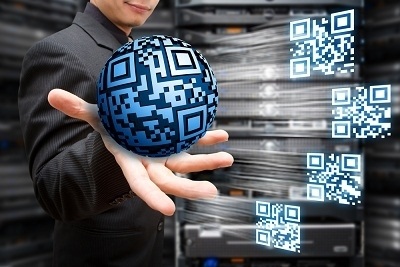Using BLE Beacons in Mobile Learning
THE QUOTE
“We placed small Bluetooth LE beacons (similar to iBeacons) around the museum, and developed an app that allows visitors to get extra information on their phones as they walk around the exhibits. The response has been awesome and we are now talking to several public museums who want the same thing. This may feel futuristic, but the cool thing is that the technologies are all already there (and cheap!)”- Geoff Stead (Head of Mobile Learning, Qualcomm).
The above quote is from our interview with Geoff Stead.
THE JOURNEY
After our inspiring and thought-provoking interview with Geoff Stead, we were left mesmerized with the way Qualcomm used their Gimbal Bluetooth Low Energy (BLE) beacons to create a learning zone effect within their museum (Check this Virtual Museum Tour Video to experience this, in case you haven’t had a chance to do so already). Since then, we have been doodling and dreaming about using this fascinating tool to create proximity-based learning applications. Now, as we are planning to get started on this project using the (Gimbal) beacons that we received recently, we set out on a journey to explore and learn more about this concept.Below are the questions we had in mind when we embarked on our journey:
- What are Bluetooth Low Energy Beacons’? What is their significance in today’s business scenario? What are the advantages?
- What is the process of setting up the Beacons? What are the options available?
- What are some of the interesting stories of organizations who have already explored or even implemented this successfully for enabling more contextualized and effective ‘learning’? In what other contexts are they being (or, could be) used in workplaces around the world?
- What are some of the useful resources available on this subject?
THE GREAT FINDS
Bluetooth Low Energy (BLE) Beacons (hereafter, we will refer to them as just ‘Beacons’ for convenience) are one of the most recently invented solutions for addressing the challenges related to finding the precise location of mobile devices in indoor (navigation) situations where GPRS, WiFi, and Cell Tower signals fail.Here’s a quick look at the basics:
- Beacons are basically devices (wireless transmitters) that emit signals to notify us of their presence. They help us precisely pinpoint the location of mobile phones indoors, and enable us to communicate with the users (of the phones) through specific apps installed in their mobile devices.
- Unlike QR Codes that help ‘pull’ content to smart phones, Beacons help ‘push’ any type of location-relevant content (such as promotions and offers in a retail scenario) to the phones. They can also help trigger location specific ‘actions’ in users’ mobile phones.
- They are tiny in size and hence allow attaching to a wall or embedding within smaller objects.
- They have a typical indoor radio range of tens of metres.
- They work even without Internet connectivity.
- They consume less energy than the standard Bluetooth devices.
- They are inexpensive and hence affordable.
- Though these devices are used primarily in the retail space today, they have the potential to transform the way contextual information is made available to learners without them having to pull this from the source.
- There are many companies who manufacture and market beacons. Apple’s recently introduced iPhones come embedded with iBeacons.
Below are some of the most interesting resources (from a big list we examined) on this subject that we would like to share with you.
Getting Started
- iBeacons - What They Are And How They Work
A good video from CTN Technology that demonstrates what iBeacons are and how they work, using rich and relevant imageries. - How Beacons Signal Big Changes
Another short video from Mashable that takes a quick look at how beacons will transform our everyday mobile experience. - BLE vs. NFC – The Future of Mobile Consumer Engagement Now!
A nicely illustrated infographic that carries a helpful comparison between BLE and Near-Field Communication (NFC) technologies that bear a lot of resemblances. - Guide to iBeacon Hardware
An excellent guide (by Doug Thompson) on the various BLE beacons and devices available in the market today from different vendors with detailed reviews. - How to Create Your Own iBeacon Experience
An inspiring introductory video from Paul Hamilton that takes you through the process of creating your own iBeacon experience without having to build your very own App.
Use Cases
- Accenture
This post (by Marjan Baghaie and Mo Ibrahim) is a peek at a few example use cases along with the one on the cross-channel promotion platform for the demo that Accenture Technology Labs has built. Check this video that beautifully demonstrates their work. - ThePush
This post (by Jen Quinlan) lists twenty-five innovative use cases for beacons that take place outside the commonly applied boutique or department store contexts. These can help trigger some great ideas for using beacons in workplaces. - Softweb Solutions
This post (by Ripal Vyas) carries some interesting use cases of iBeacons in enterprise environments. The examples included for educational contexts are quite interesting. - Preloaded
This post (by Phil Stuart) predicts how iBeacons will revolutionize museum and cultural spaces by leveraging some of the exciting gameplay possibilities (that his company is exploring in their studio) alongside augmenting and contextualizing traditional visitor experience. The use cases on delivering contextual information are thought inspiring, and could be easily extended to workplace learning and performance support scenarios. - The Washington Post
In this post, author Matt McFarland helps us take a quick look at nine fascinating possibilities of how iBeacons might change our world. - LearnerLab
This is a Slideshare presentation (from LearnerLab) that carries five brilliant examples of learning scenarios that could be powered up using iBeacons. - Hybris
This is an amazing video that shows how BLE Beacons could be combined with the power of Google Glass to make customer experiences ‘frictionless’!
Case Studies/Success Stories
- Shopkick's ShopBeacon
Shopkick is the first company to implement the iBeacon technology in a retail setting. Its ShopBeacon is a shopping app that helps you discover all the best products in stores near you. It lets you flag items you want in the store and then alerts you on any offers on those products and others you might like. - iBeacons For Education
An interesting article on EduBeacons (developed by Vektor Digital in partnership with eminent educator Paul Hamilton) with a video that highlights some really interesting work that he has been doing on ‘Learning Zones’ – physical spaces that connect students to relevant learning materials thereby enabling them to explore and locate information for themselves, taking ‘learning’ to a whole new level. - United Nations
A brilliant example of the BLE Beacons in learning! This article is on the exhibit where the United Nations Mine Action Service (UNMAS) used beacons to demonstrate and educate the public about the dangers of landmines. Here’s the link to the mobile app ‘Sweeper’ that helped power the experience together with the beacons. - BeHere
Here is an app that lets teachers take attendance and help requests using iBeacon technology. It leverages the proximity feature to allow teachers to identify which students are accessing the classroom, and also easily manage help requests from them. Check this video for a really quick demonstration of this wonderful application. - Proxima
Exciting case Studies from Proxima on how they have used Estimote iBeacons with their Proxima Platform to help users control the physical space around them using their mobile phones. - Prophets
Here’s an excellent solution (developed by Prophets) that demonstrates how the Reubens House Museum in Antwerp is using iBeacon technology to provide contextualized learning.
Beacon-based Apps
- Launch Here
This is a new iPhone app that leverages the power of iBeacons to allow you to tie iBeacons (at various spots in your home or office) to specific apps on your iPhone for automatically launching these (apps) based on your location. - Beecon
Beecon is the first universal app for iBeacons. It allows you to automate your home, office, or business through actions trigged by the beacons that you have installed around you.
OUR LEARNINGS
As we came to end of our search, we had the following learnings as ‘take-aways’ from our little journey:
- BLE technology holds a great promise for the future. Though the journey for this disruptive technology has just started gaining momentum, beacons are poised to revolutionize contextual computing. These smart devices have the potential to transform many industries, including learning and education.
- In the learning and education scenario, apart from many of the administrative and logistical benefits that beacons offer, there are a wide range of wonderful and exciting possibilities to make learning more contextual (or proximity-based) and thereby, natural.
- Beacons have the potential to evolve further to completely replace QR Codes and NFC as a tool for triggering contextualized experiences. This technology, combined with the power of Big Data and Internet of Things (IoT), can transform the way we look at contextual computing. However, for the success of this technology in any of the domains, especially learning, the challenge lies in designing and developing relevant, meaningful, and helpful mobile learning applications, the onus for which lies greatly on learning designers.
If you are among the lucky ones who have already tried out (and implemented) this new technology, please share your thoughts and experiences on using beacons for designing and developing proximity-based mobile learning experiences. Also let us know what resources and guides you would like to add on this subject.In case you haven’t yet got started, but are keen to try this out at your workplace, we suggest you sign up at gimbal.com to receive a free set of beacons for your research purposes! That’s how we received our set!Good Luck!





